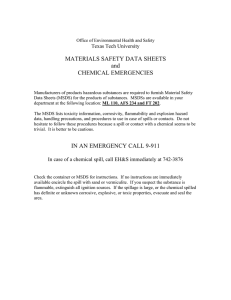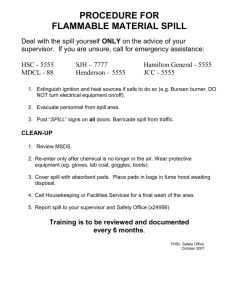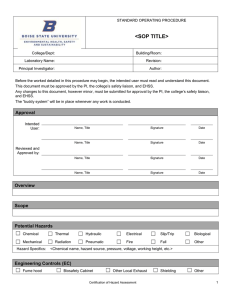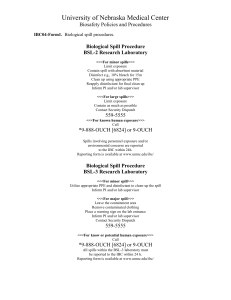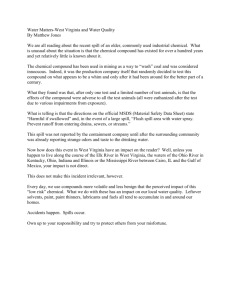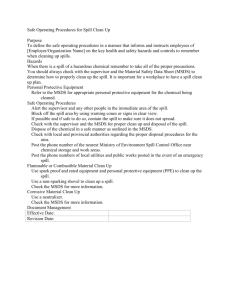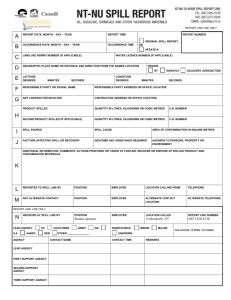Off-Campus Chemical Spill Procedures
advertisement
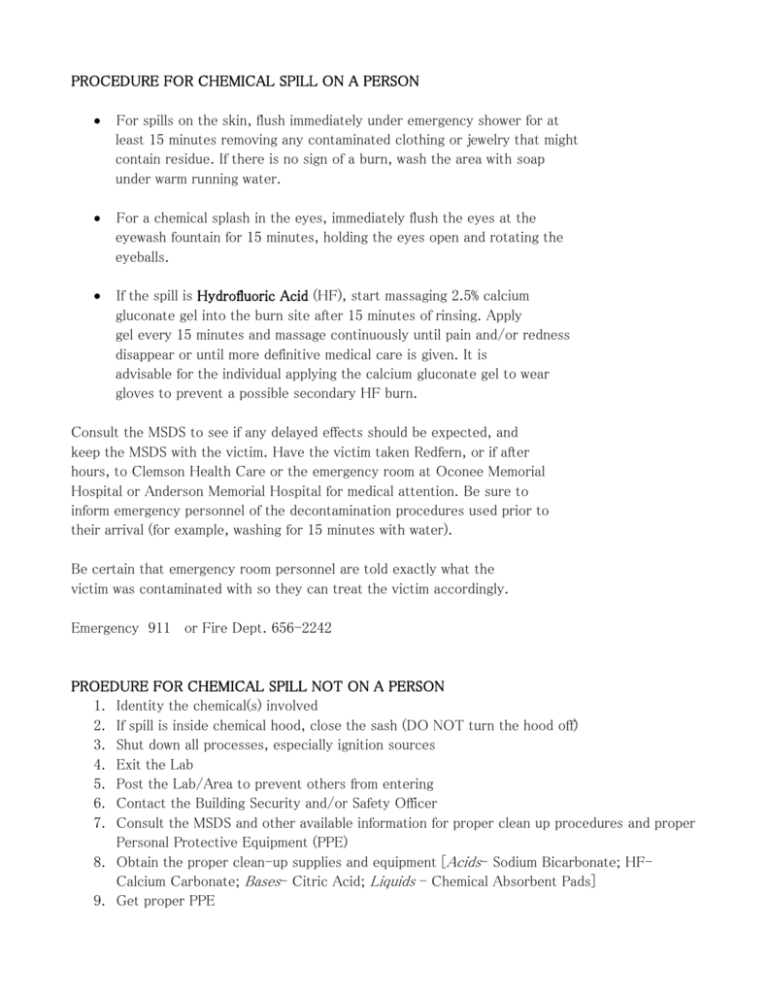
PROCEDURE FOR CHEMICAL SPILL ON A PERSON For spills on the skin, flush immediately under emergency shower for at least 15 minutes removing any contaminated clothing or jewelry that might contain residue. If there is no sign of a burn, wash the area with soap under warm running water. For a chemical splash in the eyes, immediately flush the eyes at the eyewash fountain for 15 minutes, holding the eyes open and rotating the eyeballs. If the spill is Hydrofluoric Acid (HF), start massaging 2.5% calcium gluconate gel into the burn site after 15 minutes of rinsing. Apply gel every 15 minutes and massage continuously until pain and/or redness disappear or until more definitive medical care is given. It is advisable for the individual applying the calcium gluconate gel to wear gloves to prevent a possible secondary HF burn. Consult the MSDS to see if any delayed effects should be expected, and keep the MSDS with the victim. Have the victim taken Redfern, or if after hours, to Clemson Health Care or the emergency room at Oconee Memorial Hospital or Anderson Memorial Hospital for medical attention. Be sure to inform emergency personnel of the decontamination procedures used prior to their arrival (for example, washing for 15 minutes with water). Be certain that emergency room personnel are told exactly what the victim was contaminated with so they can treat the victim accordingly. Emergency 911 or Fire Dept. 656-2242 PROEDURE FOR CHEMICAL SPILL NOT ON A PERSON 1. Identity the chemical(s) involved 2. If spill is inside chemical hood, close the sash (DO NOT turn the hood off) 3. Shut down all processes, especially ignition sources 4. Exit the Lab 5. Post the Lab/Area to prevent others from entering 6. Contact the Building Security and/or Safety Officer 7. Consult the MSDS and other available information for proper clean up procedures and proper Personal Protective Equipment (PPE) 8. Obtain the proper clean-up supplies and equipment [Acids- Sodium Bicarbonate; HFCalcium Carbonate; Bases- Citric Acid; Liquids - Chemical Absorbent Pads] 9. Get proper PPE 10. Control the spread of the spill. This would be done with the appropriate material (i.e., polypropylene pads, sand, vermiculite, etc.) 11. Make sure that all forms of local exhaust, i.e. fume hoods, are operating 12. Absorb the free liquid. 13. Carefully remove any broken glass with laboratory tongs and place into plastic bucket. 14. Inspect the area. Carefully check the entire affected area for spill residue or hidden contamination. 15. Dispose of the gloves as waste. 16. Replenish all spill clean-up material/PPE used. 17. Package and label. Place all material including any contaminated PPE, pads, paper towels, etc. into bag. Attach hazardous waste label to all bags, buckets, etc. and contact Sam Forrest (forres2@clemson.edu) for disposal. Precautions must be taken to minimize exposure to the spilled chemical. Be careful not to step in the spilled material and track it around. Contact EHS if an exposure to a chemical occurs. If the spill is too large for you to handle, involves more than 1L of any liquid material or more than one pound of solid material, requires a respirator, involves radioactive material, involves an infectious agent or involves a highly toxic, or reactive chemical, call Sam Forrest ( 656-0792 or 633-7253 ) for assistance.
